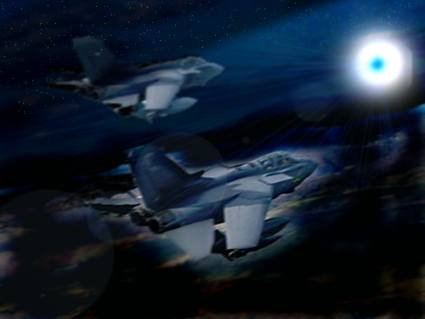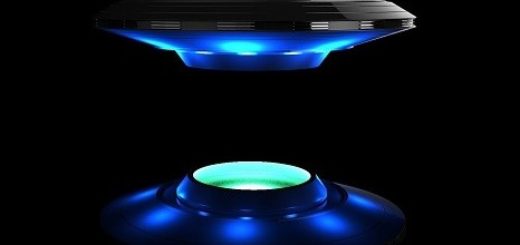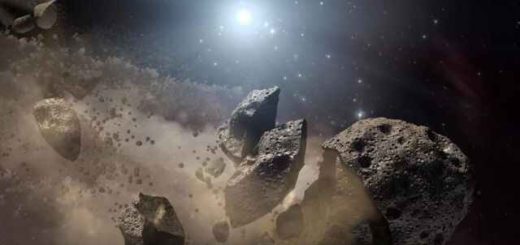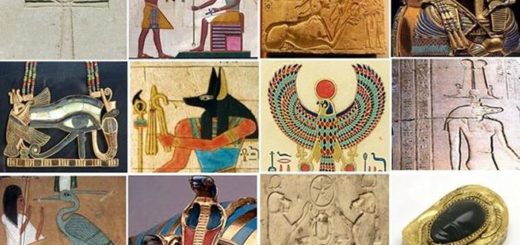Commentary on DSI/JTIC Report No 7 (Working Party)

The report begins with a history of the UFO phenomenon, covering the Scandinavian “Ghost Rocket” wave of 1946, Kenneth Arnold’s sighting, the death of Captain Thomas Mantell and the work of Projects Sign and Grudge. Curiously, Foo Fighters were not mentioned at all. Through our study of various DSI/JTIC minutes it seems that this oversight occurred because while Fighter Command were invited to submit views to the Flying Saucer Working Party, Bomber Command were not.
Roswell is not mentioned, although there is reference to a report of a “crashed flying saucer full of the remains of very small beings”. But the Report states that the author of these claims had admitted that it had been a fabrication and it is clear that this is a reference not to Roswell but to Frank Scully’s claims about the recovery of a UFO at Aztec, New Mexico, in 1948.
The report then details some British UFO sightings, concentrating on three cases involving military witnesses. But in each case, the sightings are dismissed as either optical illusions or misidentifications of ordinary aircraft or meteorological balloons. One visual sighting from a pilot had apparently been correlated by radar, but this was attributed to interference from another radar system.
The report concludes that all UFO sightings could be explained as misidentifications of ordinary objects or phenomena, optical illusions, psychological delusions or hoaxes. The main body of the report ends with the following statement:
“We accordingly recommend very strongly that no further investigation of reported mysterious aerial phenomena be undertaken, unless and until some material evidence becomes available”.
The report was duly considered by the DSI/JTIC and Mr Turney recommended that in view of the its sceptical conclusions, it should be regarded as a final report. He further suggested that the working party be dissolved with immediate effect. This was agreed by the meeting, thus bringing to an end the MOD’s first UFO research project.
The DSI/JTIC minutes of the meeting that agreed to dissolve the working party contain the following telling quote, recording Mr Turney’s views:
“He went on to say, that following the lead given by the Americans on this subject, the Report should he thought, have as little publicity as possible and outside circulation should be confined to one copy to Sir Henry Tizard”.
We should point out that in this context the terms “publicity” and “outside circulation” refer to publicity and distribution of the report within the MOD. There was certainly no question of informing the public.
The American Influence
In looking at the activities of the Flying Saucer Working Party one cannot overstate the influence of the Americans. The phrase “following the lead given by the Americans on this subject” which we quote in the previous paragraph is extremely revealing and it is clear from the report itself that much of the material comes from liaison with those involved with Projects Sign and Grudge. There are other clues. As we have said, R. V. Jones forged extremely close links with the Americans on a range of intelligence issues and it is interesting to note that the fourth item of the Flying Saucer Working Party’s terms of reference (requiring them to liaise with US authorities) was a late – though undoubtedly sensible – addition to the original remit.
Once the terms of reference included a requirement to get alongside the Americans on the UFO question, active liaison began. A member of the Flying Saucer Working Party duly travelled to America to meet with US authorities. It is also known that H. Marshall Chadwell was consulted and sat in on at least one of the Flying Saucer Working Party’s meetings.
Chadwell was Assistant Director of the CIA’s Office of Scientific Intelligence and in 1952 and 1953 was one of the key figures in the Scientific Panel on UFOs, better known as the Robertson Panel, after its chairman H. P. Robertson, an eminent physicist from the California Institute of Technology.
Robertson had been President Eisenhower’s Scientific Adviser during the war, holding the rank of a four-star General. He had worked closely with R. V. Jones on various scientific intelligence matters and moved seamlessly between government service and academia. His post-war appointments included a post as theoretical physicist in Pasadena, associated with the Mount Wilson and Mount Palomar Observatories, and a spell as head of the Weapons Systems Evaluation Group at the Pentagon.
The Robertson Panel’s sceptical report concluded that further study of the UFO phenomenon was not warranted, though as CIA Chief Historian Gerald Haines has confirmed, the CIA did not abandon their interest in the phenomenon.
It is also interesting to note what Edward Ruppelt (former head of the USAF’s Project Blue Book) says about the British UFO research effort. Writing in his 1956 book The Report on Unidentified Flying Objects he makes a number of specific references to the UK.
In chapter 3 he states that the 1948 document Estimate of the Situation (prepared by staff on the USAF’s Project Sign, initially classified Top Secret and concluding that some UFOs were extraterrestrial) mentioned that “Ghost Aeroplanes” had been detected on British radar early in 1947.
In chapter 10 there is a sentence that reads as follows:
“Two RAF intelligence officers who were in the US on a classified mission brought six single-spaced typed pages of questions they and their friends wanted answered”.
Chapter 14 mentions the September 1952 UFO sightings during Operation Mainbrace (including the sightings at RAF Topcliffe). Ruppelt comments:
“It was these sightings, I was told by an RAF exchange intelligence officer in the Pentagon, that caused the RAF to officially recognise the UFO”.
In chapter 17 Ruppelt reveals that even after he had left Project Blue Book and the USAF, friends in RAF intelligence kept him informed about latest developments, on a private basis.
Another indication of the strong US influence on the Flying Saucer Working Party is the fact that their June 1951 final report was entitled Unidentified Flying Objects. This term had been devised by Ruppelt himself, early in 1951, but was not at the time in use outside US Government circles.
To put the above remarks about US influence into context, it is worth noting the extent to which Britain was in thrall to America more generally by the early Fifties. This process had started during the Second World War with the Lend-Lease Bill, the terms of which had contributed to the decline of British power and influence. By the end of the war it was clear that in a very real sense the British Empire had been supplanted by an American one. In intelligence matters too, the historic position had been reversed and in post-war years Britain was very much the junior partner to the US.
Revenge of the Saucers
The Flying Saucer Working Party had been dissolved in 1951 amidst a frenzy of scepticism that had clearly been fuelled by the Americans. The response that Churchill received to his 1952 enquiry showed that the sceptics still had the upper hand within the MOD. But this was soon to change. During the period 1952 to 1957 there were a series of UFO sightings involving the military, which forced the MOD to rethink and then reverse its policy. These included sightings during Operation Mainbrace in September 1952 (including those at RAF Topcliffe), the West Malling incident on 3 November 1953, Flight Lieutenant Salandin’s near-collision with a UFO on 14 October 1954, the Lakenheath/Bentwaters radar/visual sightings on 13 and 14 August 1956 and the RAF West Freugh incident on 4 April 1957.
High-profile sightings such as these, together with the increasing number of reports from the general public, pushed the sceptics within MOD onto the defensive. The Flying Saucer Working Party’s recommendation that UFO sightings should not be investigated was overturned and by the mid-Fifties two Air Ministry Divisions were actively involved in investigating UFO sightings. The divisions concerned were S6, a civilian secretariat division on the air staff, and DDI(Tech), a technical intelligence division. Their brief was to research and investigate the UFO phenomenon looking for evidence of any threat to the UK.
Conclusion
This article gives what we believe is the most comprehensive overview yet written concerning the early years of official British interest in UFOs. We hope that the information and references will encourage other researchers to follow some of the leads given here.
Some time in the future, it may be that the MOD writes an Official History of its involvement in the UFO issue, in much the same way as such accounts are produced on major events such as the Falklands Conflict or the Gulf War. If and when such an Official History is written, it will doubtless cover much of the material in this article, as well as more recent events such as the Rendlesham Forest incident.
But any Official History must also focus on the personalities involved in official research and investigation into UFOs. In looking at the story told in this article it is clear that the same names crop up repeatedly and that there are some intriguing links between some of these key players. It is also intriguing to see the way in which the sceptic versus believer debate about the extraterrestrial hypothesis has been conducted at the very highest levels of government and military. This is as much a part of the story as the incidents themselves.
by Georgina Bruni and Nick Pope



 Creators of mankind
Creators of mankind Description of “Tall white aliens”
Description of “Tall white aliens” Where they came from?
Where they came from? About hostile civilizations
About hostile civilizations The war for the Earth
The war for the Earth “Tall white aliens” about eternal life
“Tall white aliens” about eternal life Video: “Nordic aliens”
Video: “Nordic aliens” Aliens
Aliens Alien encounters
Alien encounters The aliens base
The aliens base UFO
UFO Technology UFO
Technology UFO Underground civilization
Underground civilization Ancient alien artifacts
Ancient alien artifacts Military and UFO
Military and UFO Mysteries and hypotheses
Mysteries and hypotheses Scientific facts
Scientific facts


















